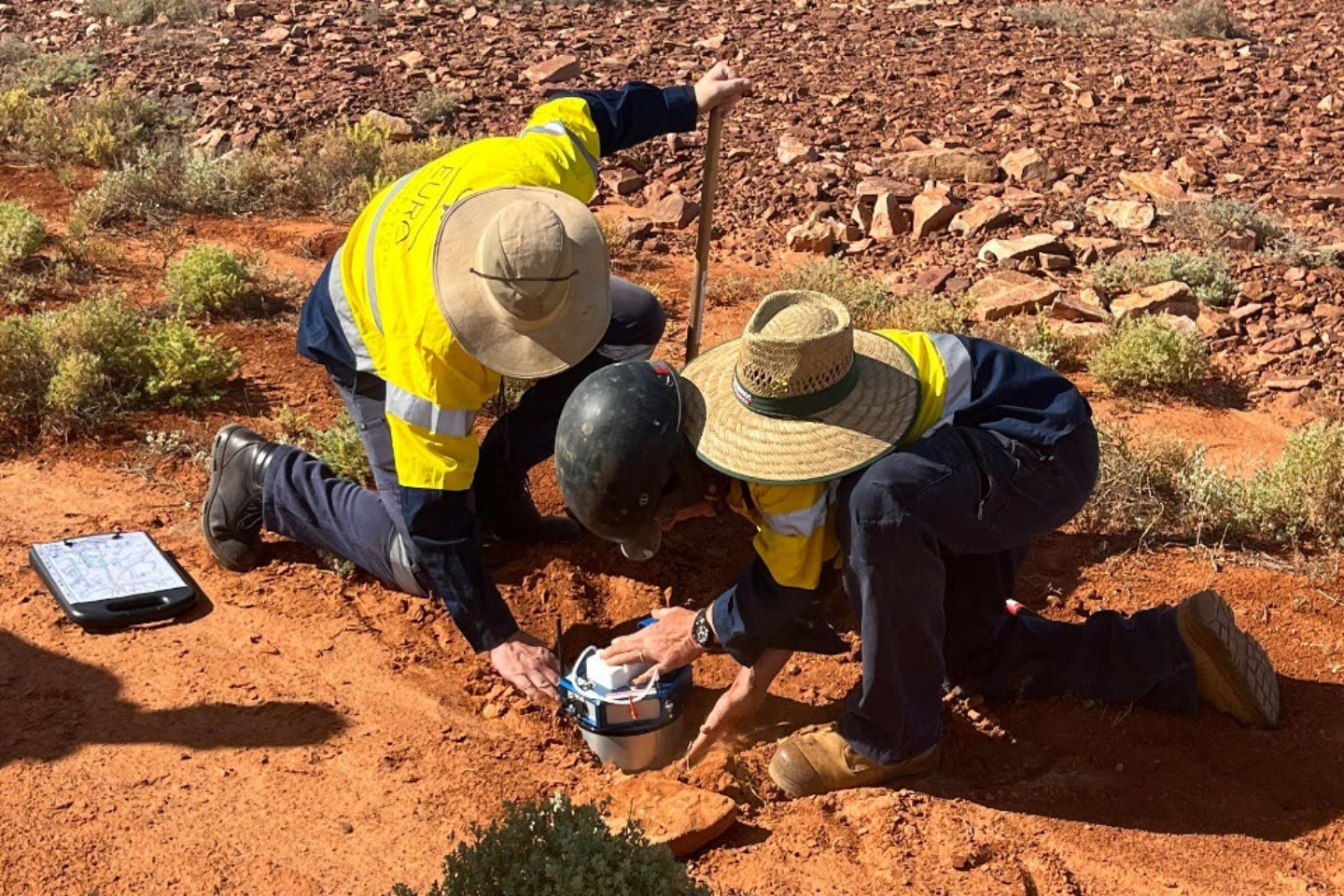Coda Minerals has completed four Ambient Noise Tomography, or “ANT” surveys across key prospects at its Elizabeth Creek copper project in South Australia with early results highlighting new areas of interest.
The surveys are designed to use an advanced passive seismic technique to produce a detailed sub-surface velocity map to assist in the identification of iron-oxide copper gold mineralisation close to the company’s Emmie deposits.
The ANT survey covers a much greater area at significantly lower cost than drilling, allowing it to refine and update the next stage of its exploration campaigns. Three of the surveys covered the broader Emmie Bluff area including the Emmie IOCG, with the fourth covering the Elaine IOCG prospect.
Coda says all four surveys were completed safely, on time and on budget with a detailed interpretation currently underway before results are expected by the end of the March quarter.
In addition to assisting with exploration for IOCG-style mineralisation, the ANT survey is also expected to assist in the identification of any additional areas of Tapley Hill shale, which is the host rock for the shallower copper-cobalt deposits that occur across its tenements.
Coda Minerals Chief Executive Officer, Chris Stevens said: “In terms of the sediment-hosted copper-cobalt mineralisation, we are also encouraged by clear ANT anomalism identified coincident with the Emmie Bluff Mineral Resource, as well as in other locations at the same stratigraphic level. These new targets have not been subjected to any previous drilling and are likely to be elevated to high priority targets for Coda.”
In November last year the company revealed a positive mining study showing a viable pathway to steady-state production of 2.5 million tonnes per annum at Elizabeth Creek. The mining assessment forms part of a broader scoping study and is centred around underground mining of the project’s cornerstone Emmie Bluff copper-cobalt deposit.
The proposed mining schedule will see Emmie Bluff mined over 17 years whilst also extracting material from two smaller satellite deposits at Windabout and MG14 that will be used as mill feed during the development and ramp-up of the main operation.
The operation’s cornerstone deposit hosts 43 million tonnes at 1.3 per cent copper, 470 parts per million cobalt, 11 grams per tonne silver and 0.15 per cent zinc or 1.84 per cent copper equivalent. In terms of contained metal, it boasts 560,000 tonnes of copper, 20,000 tonnes of cobalt, 15.5 million ounces of silver and 66,000 tonnes of zinc or 800,000 tonnes of copper equivalent.
However, the company will be hopeful that the data collected from its ANT surveys will eventually lead to a boost in all of those numbers across its flagship project.
Is your ASX-listed company doing something interesting? Contact: matt.birney@businessnews.com.au
















